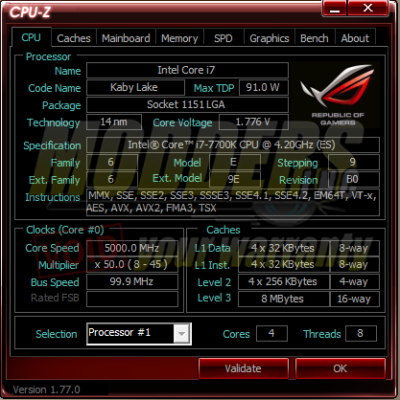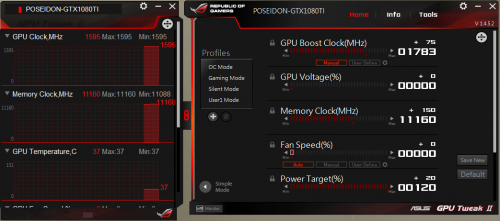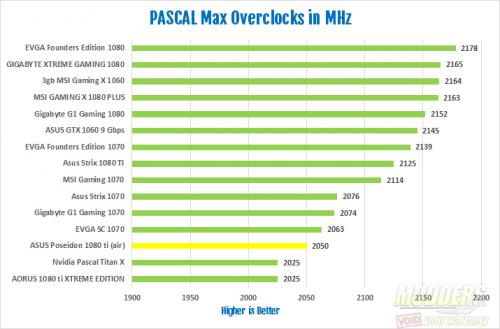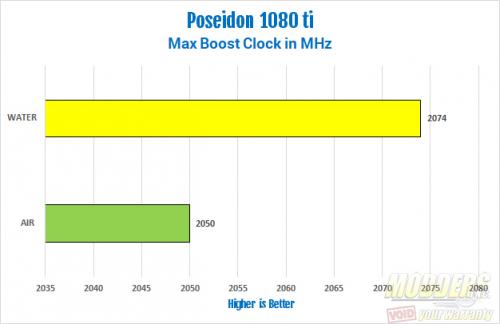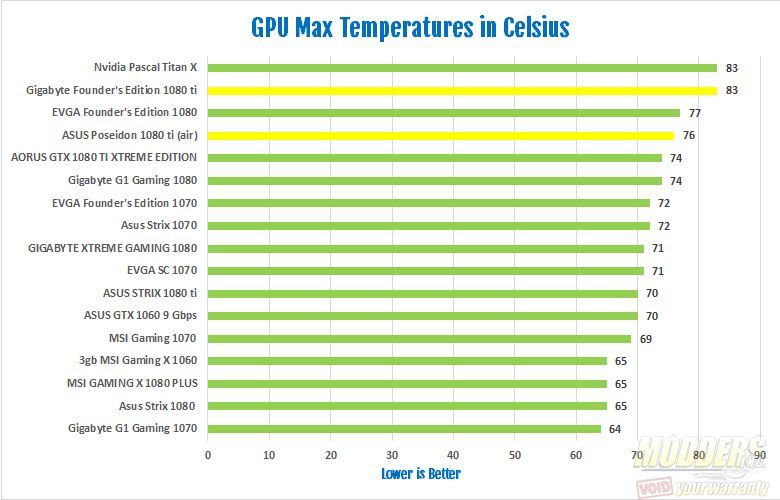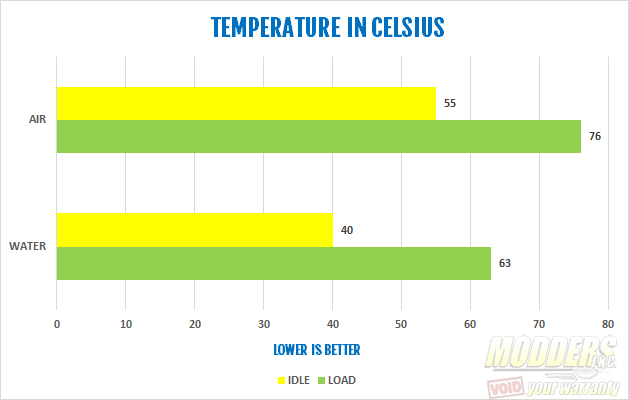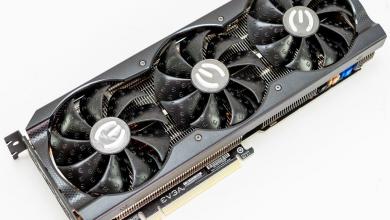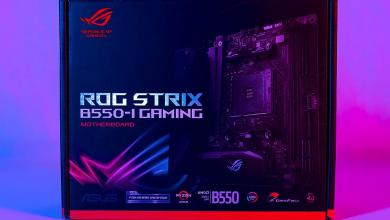ASUS ROG Poseidon GTX 1080 Ti 11G Video Card Review
The God of the Sea's water cooling weapon
Fan noise, Temperatures and Overclocking
If there could be one negative thing said about the 1080 Ti, it would have to be that its not the greatest overclocker. That is, at least for a Pascal GPU. Most other 1080 Ti models I’ve tested usually boost to about 2000 MHz, and none have gone over 2025 MHz at all, until now. When tested on air, the Poseidon Platinum 1080 Ti boosted to 2050 MHz. This excited me. Even more so when the card was tested on water, using the Swiftech H140-x aio cooler. On water, the Poseidon hit 2074 MHz. For a 1080 Ti, this is great.
The temperatures were impressive as well. The two reference 1080 Ti I tested maxed out at 82°c and 83°c respectively. The reference card was put through the same synthetic testing and many of the same games the Poseidon was tested on as well. On air, the Poseidon Platinum 1080 Ti hit a max temperature of 76°c and and idled at 55°c. This is 7°c cooler than the highest temp I recorded on the reference card. When the AIO was added, the max temperature dropped to 63°c and idled at 40°c. I believe a custom loop would lower these temperatures even further. However, I didn’t have everything to test this theory yet.
The card is very quiet, even on air. When the system is idle, my sound meter reads about 37 dB, or decibels. When the fans are set to 55% power, the sound meter bumps up to only 40 dB. Even with the fans set to 100%, the sound meter never went above 45 dB. Keep in mind that this is on an open air test bench. When testing sound levels, I keep the sound meter right next to the card. Over all, this is one of the quietest cards I’ve personally ever tested.

